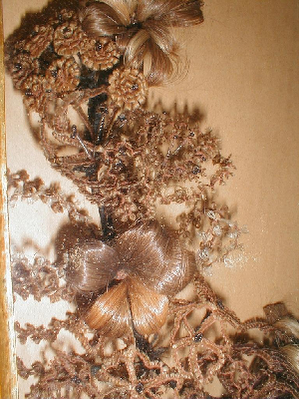
History of Hair Jewelleries – Hair Art
A lock of hair given as a symbol of love to a beloved was the most precious gift that could be compared to nothing, during the 16 th and the early 19 th century. Hair was a token of love, admiration and also a remembrance of the dead. It was the most accepted and widespread expression of love.
The pactice of embedding the hair of a loved ones into an art form or a form of jewelery can be traced as far as the 16 th century. The art form reached it's zenith during the Victorian period in the late 18 th century and the early 19 th century. They were popular during the time when there were no provision of having pictures.
Hair has been considered as a symbol of life and death. The reason being that hair are made of protien that do not decompose at a speedy rate even after death. Hair were used as a momento of those who were seperated by their loved ones. They were a symbol of love and remembrance. The hair of the parted beloved was taken and made into various hair jeweleries, pendants or brooches to keep the seperated closer to the heart.
Hair was made into some form as a symbol of a loved one. They were also used as background against which the initials of the loved ones were written on. They were mostly made from human hair as a momento of a loved one. Hair jeweleries were a token of love and rememberance.
Hair bracelets were mostly given as love tokens by both men and women alike. They were not only meant for the purpose of remembering the dead ones. They were not only a symbol of seperation but also momento of love that were shared for sentimental reasons as token of love and affection.
Traces of this practice of giving a lock of hair as a symbol of love and remembrance can be traced from different cultures as well as different time periods. Many novels written during the period make constant referance to the practice of giving a lock of hair to a beloved as a token of love and remembrance. The tomb paintings of Egypt show pharaohs and queens exchanging hair tokens. Records mention that King Christian IV of Denmark gifted a hair jewelry item to his queen late back in the 16 th century. Queen Victoria got pieces of jewelry made from her hair whereas Napoleon wore his watch on a chain that was made from the hair of his wife Marie Louise.
Important instructions were to be found in Godey's Lady's Book and Peterson's magazine for excanging hair locks between two people as well as for setting it in a jewelery form.
Some popular hair jewelery items were brooches, bracelets, cuff links, earrings and watch fobs.

